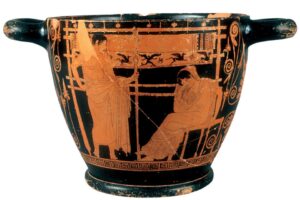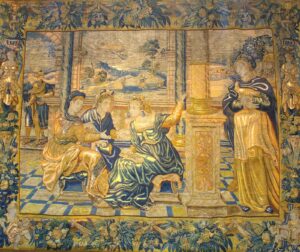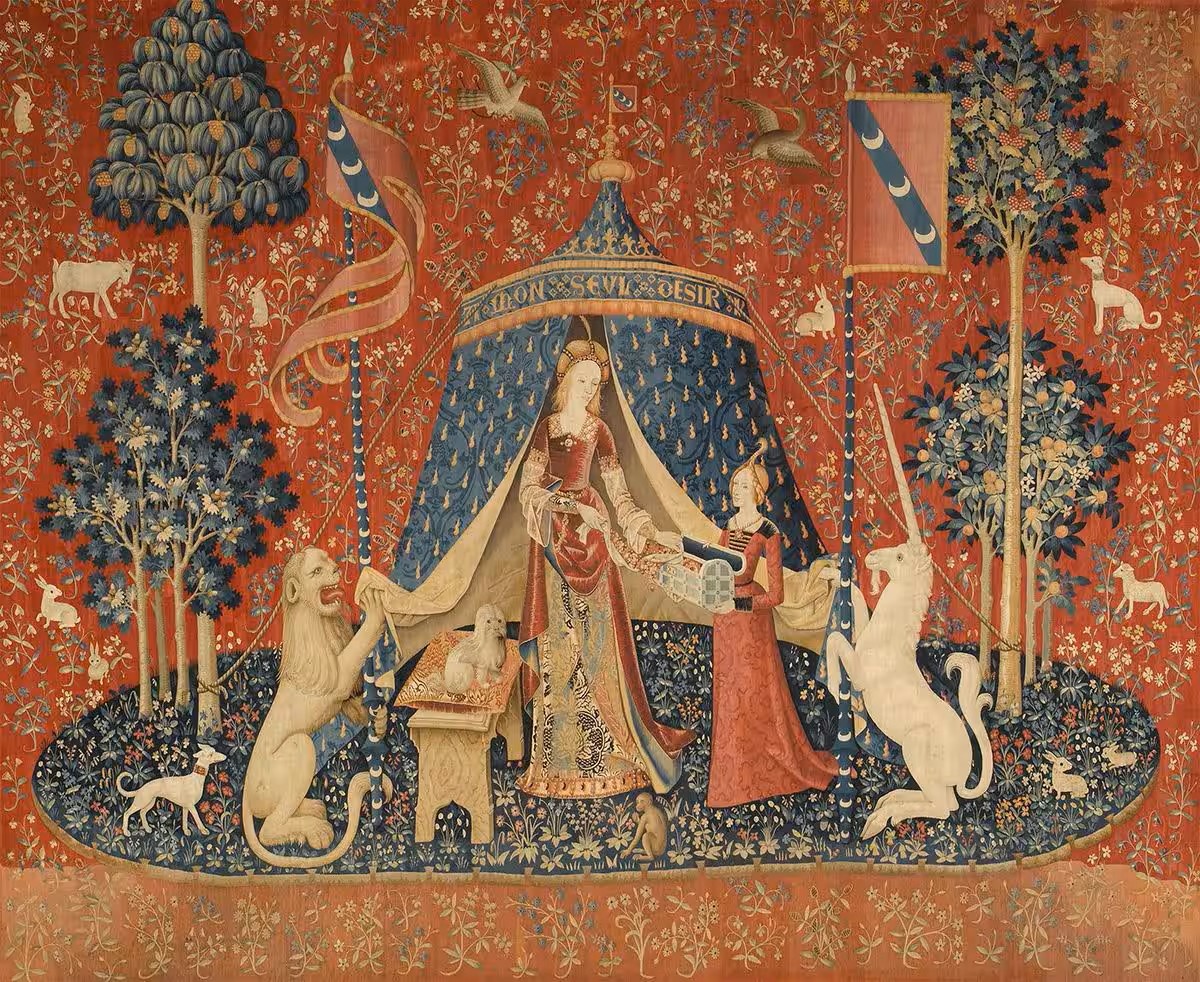
TAPESTRIES
Polonius, Ophelia’s father, hides behind the tapestry in Elsinore Castle to spy on Hamlet. The prince, unaware of his identity, stabs and kills him. But how? One might ask. Behind the tapestry? Yes, because, as in Shakespeare’s tragedy, large tapestries were placed away from the walls to conceal secret doors or, when necessary, provide cover for various purposes.
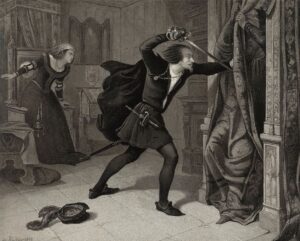
(Hamlet kills Polonius)
Tapestries were common in castles, palaces, and large churches. In addition to serving a magnificent aesthetic function, they also helped retain warmth in rooms. Moreover, unlike frescoes, they could easily be removed for safekeeping or transferred elsewhere.
A tapestry is a special textile handmade on high-warp looms (entirely by hand, with fine craftsmanship) or low-warp looms (using foot pedals to speed up the process at the expense of detail). On the loom, the vertical threads (usually made of hemp or linen) form the warp, while the horizontal threads, woven through the warp, create the weft. The weft threads, made of wool, silk, or cotton, and sometimes even gold or silver, form the design that covers the entire surface of the tapestry.
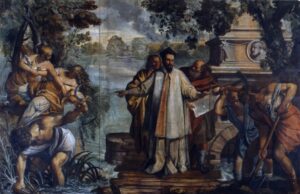
(Cartoon for the Barberini tapestries)
The process of making tapestries, still similar to that of the 14th century, begins with the design of the model, known as the “cartoon”. These cartoons were created by great painters such as Raphael, Rubens, Le Brun, Goya, Miró, and Picasso. The weaving process is extremely time-consuming, often requiring months of work. Tapestries should not be confused with textiles, which are mechanically produced and repeat the same design multiple times, nor with carpets, which have a completely different warp and weft structure of lower quality.
